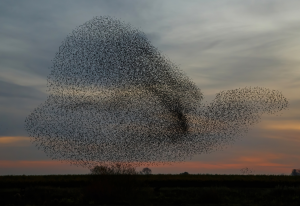Racial Reckoning beyond Reductionism

Like so many, I am in the thick of the United States’ current racial reckoning, frustrated by the ways that white supremacy infects even proactive antiracist work, including my own. Among the many things that seem to stymie progress or even some measure of solidarity is conceptual reductionism. There is certainly reductionism among “anti-anti-racists.” Even with all that has happened in the last two plus years, most people in my predominantly white day-to-day world in the U.S. Southeast still understand “racism” to refer narrowly and solely to overt racial prejudice—conveniently thereby claiming that it flows equally in both/all directions. Likewise, for most, “white supremacy” refers only to white hoods and crosses burnt on front lawns in the dead of night. This, too, conveniently allows for a personal exemption from racism.
But frequently there is also reductionism or oversimplification among those doing The Work, especially “good white people.” Reductionism is attractive—and perhaps understandable—in the face of the wicked problem of white supremacy. “If only people better understood implicit bias and how to resist it.” “If only more people voted differently.” “The problem is older generations. Once the young people are leaders, things will change.” “People just need more education and training.” But reductionism is itself a manifestation of white supremacist thinking, and white allies and accomplices would do well to be on the lookout for it.
With the rise of various Movements for Black Lives, media and social media spotlights on police brutality, New York Times bestsellers educating about anti-racism, and one professional sports league after another engaging in a dramatic about face, the concepts of systemic racism, white privilege, and white supremacy are finally entering the mainstream after decades of circulation in mostly academic circles. This is all to the good. As long as this mainstreaming does not become its own form of reductionism, oversimplifying complex concepts for the sake of digestibility and becoming grounds for superficial performativity.
My own work of educating for equity continues to address the persistent structural dimensions of racism, even as Critical Whiteness Studies (CWS) draws my attention time and again, forcing me to examine the ways that I—as a white cishet woman—not only benefit externally from white privilege but embody and perpetuate white supremacy against my very own will. Maybe the Apostle Paul (with whom I usually tend to disagree!) was onto something when he lamented, “For I do not do the good I want, but the evil I do not want is what I do” (Romans 7:19). No white hood needed.
One of the best tools my antiracist community has found is an article, now expanded to a robust and striking web resource by Tema Okun (and her cloud of named co-conspirators), “Characteristics of White Supremacy Culture.” This treasure lays out not only 19 key characteristics of white supremacy culture and the behaviors that embody them, but also their antidotes. Insightful and imminently practical, the resource can be used developmentally as a tool of resistance. It is also striking how much the antidotes reflect the non-Western and alternative thought systems that Counterpoint seeks to celebrate and amplify.
Here I highlight just a few characteristics that have been helpful in my life and work, with appreciation for thinkers and doers who invite us into alternative ways of knowing and doing.
- One Right Way & Either/Or Binary: Even the most dedicated (white) postmodernist can succumb to this unwittingly. Both the insistence that there is only one right way and a tendency toward either/or thinking (that ignores the complexity of relationships and ideas) perhaps most clearly embody the conceptual reductionism that I mention above. What nuance and richness do we miss when we ignore the teeming complexity of our entangled lives on this planet? None of us can do it all, but what creative possibilities do we miss in the work of racial justice when our focus is narrow and we shut out emergent ideas and relations? adrienne maree brown is a superb guide for emergent work that resists these tendencies.
- Individualism: This one is no surprise for Counterpoint readers and disciples of (among others) Buddhism, various Indigenous wisdom traditions, ecofeminism, and Whitehead’s “philosophy of organism,” but it bears mention. Black mindfulness teacher and author Ruth King points to this as a particular barrier for “good” white people who struggle to understand their implication in white supremacy because they do not understand themselves to be part of a collective. It is only in acknowledging that collective whiteness claims them that they can then start to do the work of divesting from that whiteness.
- Worship of the Written Word: Hello, scholars! Okun notes that white supremacy worships a very particular form of the written word over all other forms of communication as the bearer of truth and legitimate knowledge. This idolatry falls on a continuum explored by other scholar-practitioners where the discursive is prized over the contemplative (Rhonda V. Magee), and the cognitive over the somatic (Resmaa Menakem). Menakem is at the forefront of promoting the healing of racial traumas through somatic practice, including the inherited traumas of whiteness. People are flocking to his Cultural Somatics Training & Institute with courses filled through 2022 and into 2023.
With my co-conspirator Naomi R. Simmons, a sociologist by trade, we are following the lead of these wise teachers and others to pursue “equity from the inside out.” Through our organization White Women Reckoning, we invite white women, white gender-expansive persons, and really anyone who wants to work within a collaborative, creative, challenging, non-patriarchal space to excavate and investigate—with courage, curiosity, and compassion—the white supremacy that shapes us inside and out.
This work is broader and deeper than unconscious bias trainings, which have been proven ineffective. In fact, data now show that such trainings tend to make things worse because they surface problems without equipping people to grapple with what they learn, both about the problem writ large and about themselves. Excavating unconscious bias is the work of a lifetime. It cannot be done in a one-and-done DEI training (which reflects a white supremacist desire for urgency and “quick visible results”). Understanding the ways that one, as a white person, embodies and advances white supremacy in the world—even against one’s own will—and then countering those impulses takes a kind of devotional practice usually reserved for religious or spiritual commitments. This means it also requires slowness. Yes, the activist and institutional work is urgent. The healing work requires depth, deliberation, and showing up on the proverbial cushion.
As a process-relational familiar who draws wisdom from Indigenous and Buddhist perspectives, I am eager to think—and to sense and to imagine—a non-reductive, somatic, emergent path through this racial reckoning. With my ears, eyes, and heart attuned to those opening the way.
#
Krista E. Hughes is Director of the Muller Center for Exploration and Engagement and Associate Professor of Religion at Newberry College in South Carolina, USA. She is also a facilitator for the community transformation organization Speaking Down Barriers and the co-founder and equity strategist of White Women Reckoning. Co-editor of Ecological Solidarities: Mobilizing Faith and Justice for an Entangled World, she also writes and speaks about vocational exploration, higher education, racial reckoning, and theological perspectives on whiteness. A child of the U.S. South, who lived and traveled widely before returning home, she celebrates the beauty, warmth, and richness of the region and its peoples while grappling with its damaging legacies.
Counterpoint blogs may be reprinted with the following acknowledgement: “This article was published by Counterpoint Navigating Knowledge on 9 June 2022.”
The views and opinions expressed on this website, in its publications, and in comments made in response to the site and publications are those of the author(s) and do not necessarily reflect the views and opinions of Counterpoint: Navigating Knowledge, its founders, its staff, or any agent or institution affiliated with it, nor those of the institution(s) with which the author is affiliated. Counterpoint exists to promote vigorous debate within and across knowledge systems and therefore publishes a wide variety of views and opinions in the interests of open conversation and dialogue.
Photo credits: “Murmuration,” free download from Canva.



